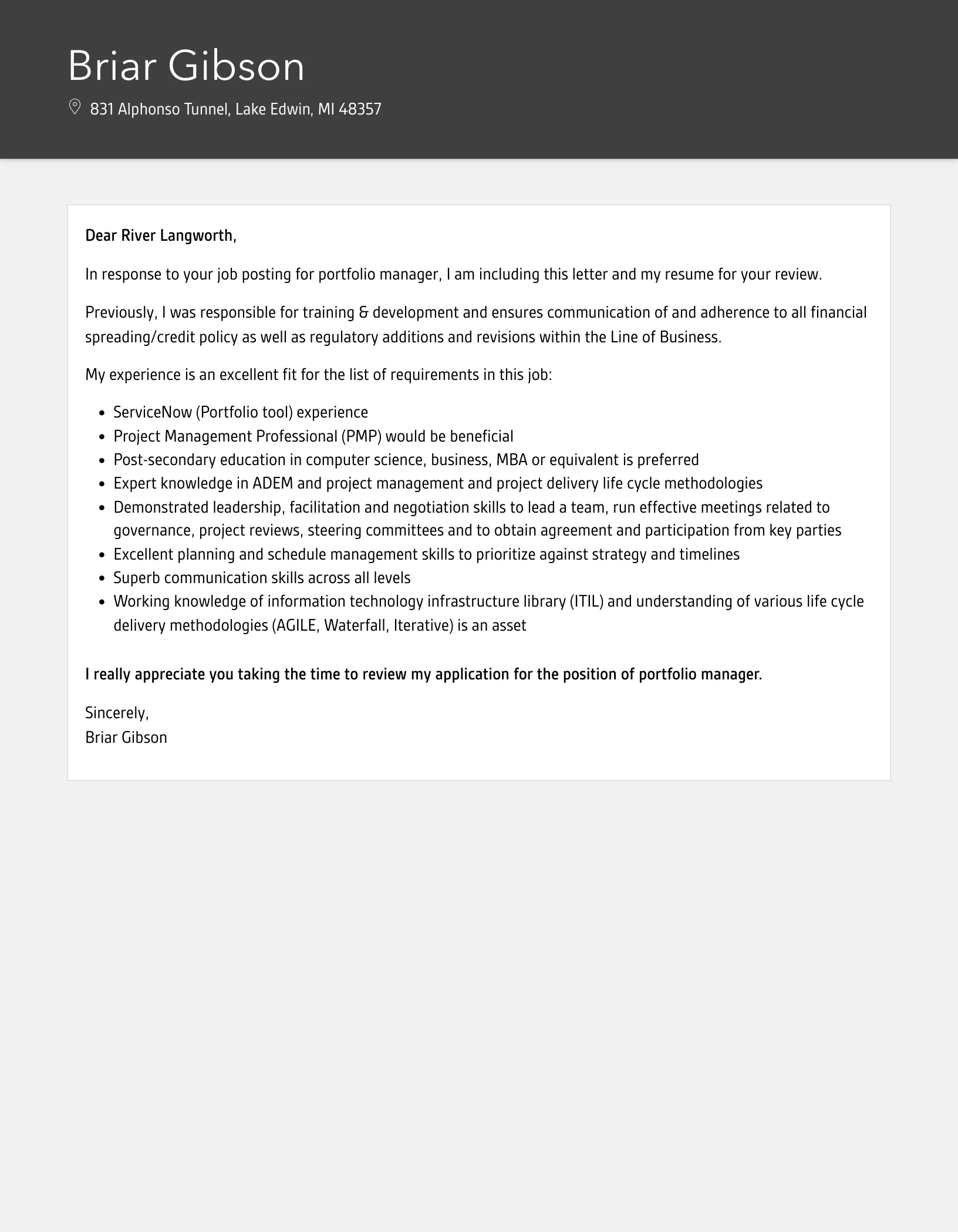Cover Letter: The Key to Landing Your Dream Job
In the competitive world of portfolio management, a well-crafted cover letter can be your most powerful tool. It’s your first opportunity to make a strong impression on a potential employer, and it’s often the deciding factor in whether or not your resume even gets a second look. A cover letter isn’t just a formality; it’s a critical piece of your job application package that lets you showcase your personality, your passion for finance, and most importantly, why you’re the perfect fit for the role. Crafting a compelling cover letter can feel like a challenge, but with the right approach and understanding of what hiring managers seek, you can significantly boost your chances of landing an interview and ultimately, your dream job as a portfolio manager.
Understanding the Importance of a Cover Letter
Why a Cover Letter Matters
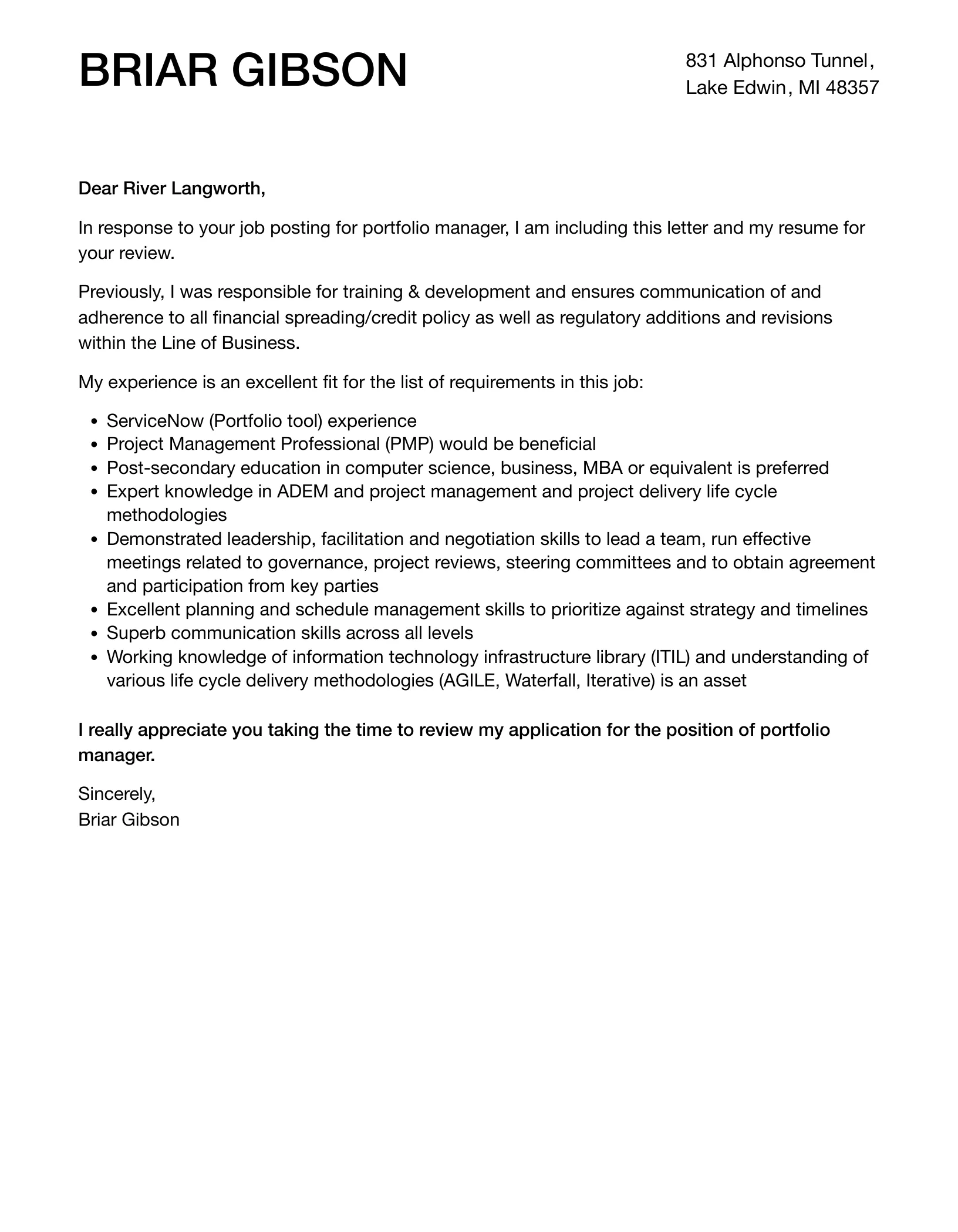
A cover letter serves as your introduction to the hiring manager, allowing you to provide context to your resume and to demonstrate your enthusiasm for the specific opportunity. It allows you to tell your story, explaining not just what you’ve done, but why you’ve done it and how it aligns with the needs of the company. Unlike a resume, which simply lists your experiences and skills, a cover letter gives you the space to elaborate on your qualifications and to demonstrate how your unique blend of skills and experiences makes you a strong candidate for the role. Furthermore, it provides a way to address any potential concerns the hiring manager might have, such as gaps in employment or a career change. A well-written cover letter can set you apart from the competition, conveying your interest, skills, and value proposition in a compelling and memorable way.
Cover Letter vs. Resume Differences
While your resume is a concise overview of your professional history, your cover letter is where you can elaborate and persuade. The resume focuses on facts – your past job titles, dates of employment, and technical skills. The cover letter, on the other hand, focuses on storytelling and tailoring your experience to the specific job. Think of your resume as a summary and your cover letter as an expansion of that summary. The resume provides the what, while the cover letter provides the why and the how. A resume’s structure is rigid, using bullet points and concise descriptions, while the cover letter allows for a more narrative format that can showcase your communication skills and personality. Therefore, the most important distinction is the resume is a list, while the cover letter explains the list.
Essential Components of a Portfolio Manager Cover Letter
Contact Information and Date
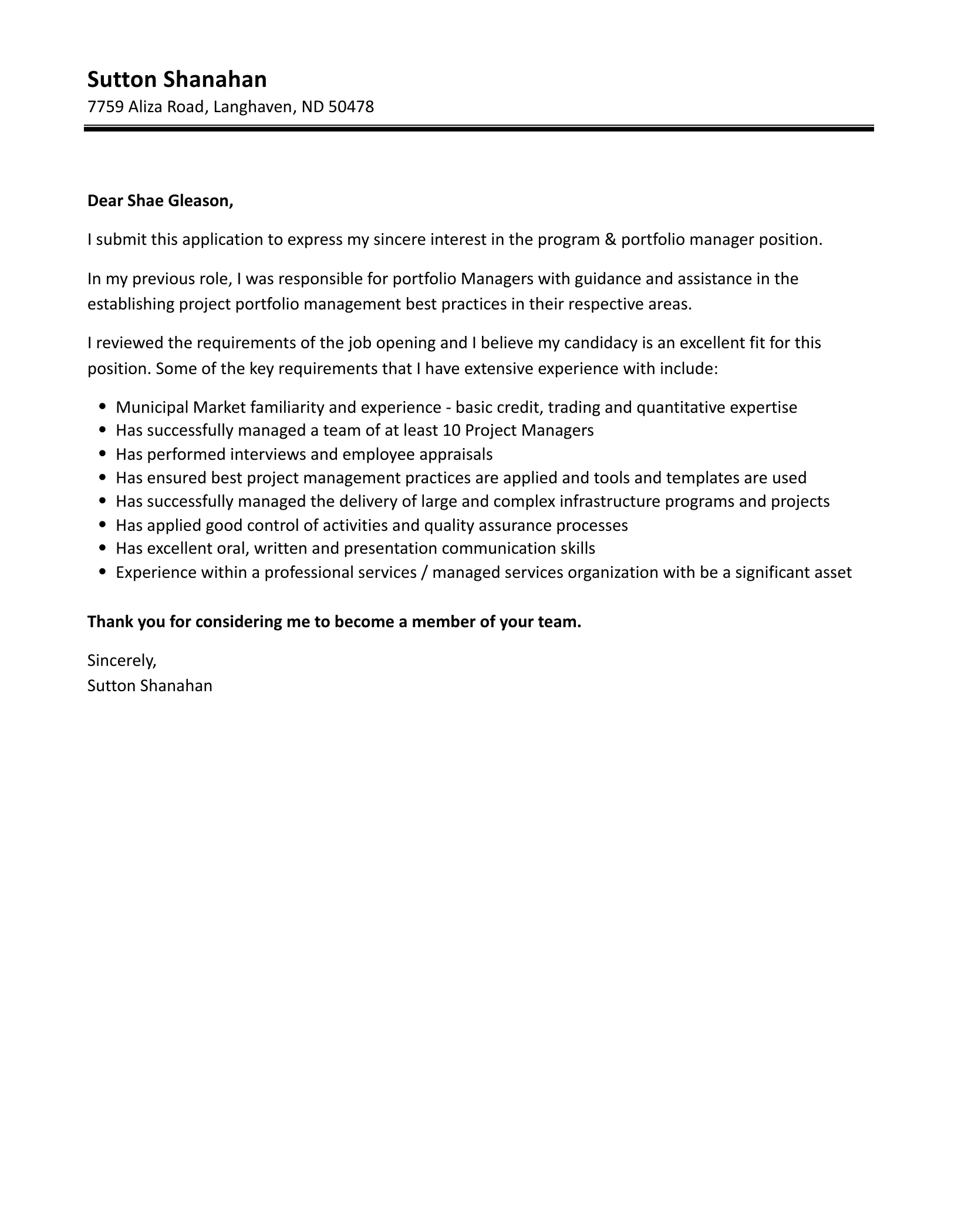
Begin your cover letter with your contact information. Include your name, address, phone number, and email address. This should be aligned to the left side of the document. Directly below this information, include the date. Ensure that the date is formatted correctly, such as Month, Day, Year (e.g., December 22, 2024). This establishes professionalism and makes it easy for the employer to reach you. This section, though simple, sets the tone for the rest of the letter. Double-check this information for accuracy to avoid any potential communication problems, which helps in creating an immediate impression of attention to detail. Proper formatting and the inclusion of your contact details are essential to facilitate the hiring manager’s ability to contact you if they want to offer you an interview.
The Recipient’s Information
Directly below the date, include the recipient’s information. Ideally, address the letter to a specific person, such as the hiring manager or the head of the investment team. Research the company to find the correct name and title; this shows that you’ve done your homework and are genuinely interested in the position. If you can’t find a specific name, use a professional title, such as ‘Hiring Manager’ or ‘Head of Investments.’ Addressing the letter to a specific person makes it more personal and demonstrates initiative. Use a formal greeting, such as ‘Dear Mr./Ms./Mx. [Last Name],’ to show respect and professionalism. Avoiding generic greetings, such as ‘To Whom It May Concern,’ increases your chances of making a favorable impression.
The Opening Paragraph
Your opening paragraph is your first chance to grab the reader’s attention. Start with a strong statement that highlights your interest in the position and the company. Briefly mention where you found the job posting and why you are interested in the role. Show enthusiasm for the specific opportunity and express a clear understanding of the company’s mission or values. Avoid generic openings; instead, tailor your introduction to the specific role and company. State the position you are applying for and how you learned about the opportunity. A well-crafted opening sets the tone for the rest of your cover letter, encouraging the hiring manager to read further. A compelling introduction is key to getting your cover letter read.
Highlighting Your Skills and Experience
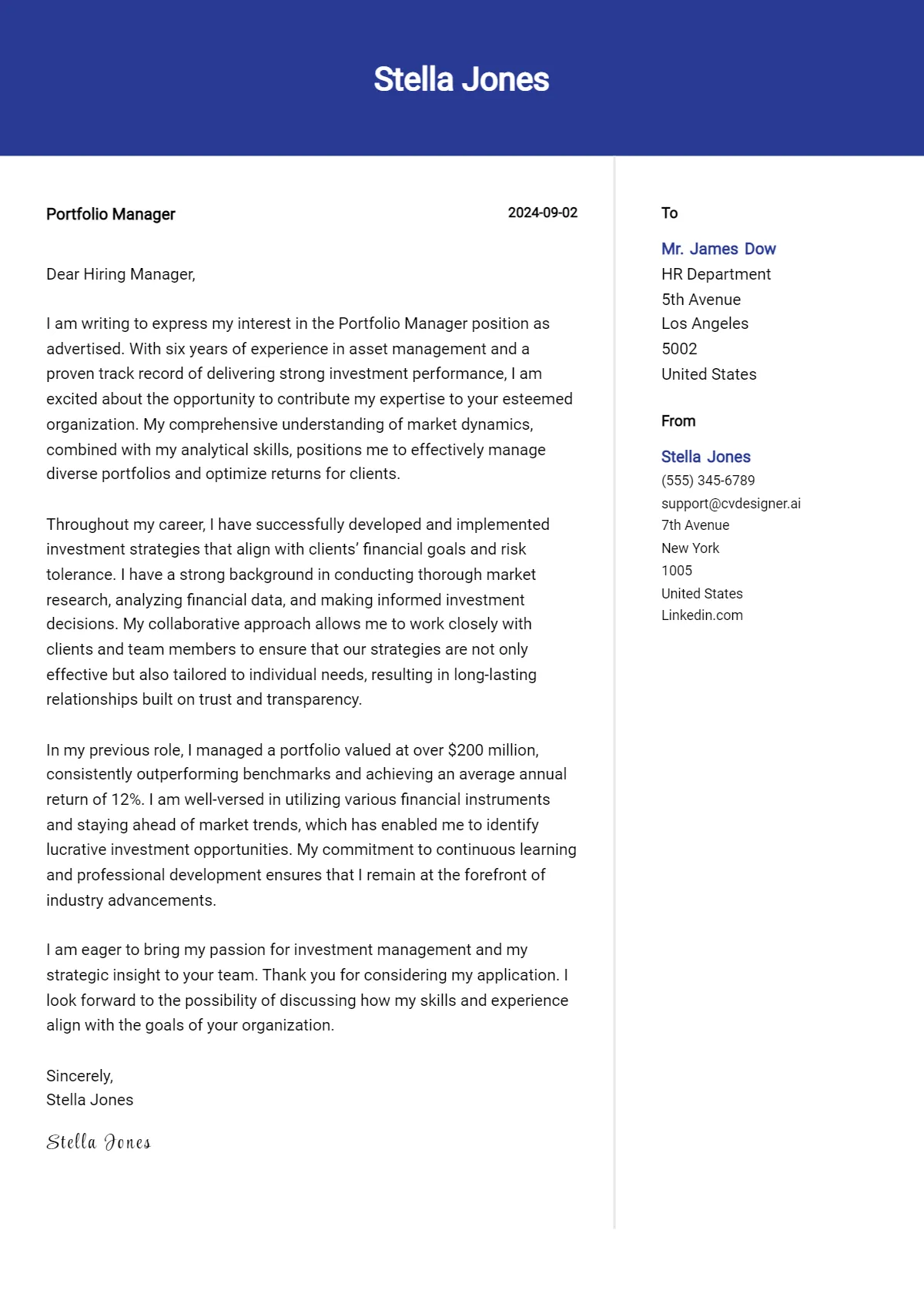
The body of your cover letter should highlight your relevant skills and experience. Align your qualifications with the requirements listed in the job description, showcasing how your background aligns with the needs of the role. Use specific examples to illustrate your abilities, and quantify your achievements whenever possible. This section is where you persuade the hiring manager that you are the best candidate. Focus on the skills and experiences that align most closely with the job requirements, which should include proven abilities in investment strategies, risk management, and financial analysis, along with excellent communication and leadership skills. Provide concrete examples of your successes in previous roles to demonstrate your capabilities and capabilities.
Quantifiable Achievements
Quantify your accomplishments to demonstrate your impact. Whenever possible, use numbers and data to support your claims. For example, instead of saying ‘Managed a successful portfolio,’ state ‘Managed a $500 million portfolio, achieving an average annual return of 12% over the last three years.’ This provides concrete evidence of your abilities and shows the hiring manager the value you can bring to the company. Use metrics such as portfolio returns, assets under management, cost savings, or improved efficiency to make your achievements clear and tangible. Presenting your accomplishments in numbers adds credibility to your claims and helps the hiring manager understand the scope of your impact in previous roles.
Tailoring to the Job Description
Carefully review the job description and tailor your cover letter to the specific requirements outlined. Highlight the skills and experiences that align with the company’s needs. Use keywords and phrases from the job description to demonstrate that you understand the role and are a good fit. Make sure to specifically address the qualifications listed in the job description, which might include experience in certain types of investments, specific financial tools or software, or industry-specific knowledge. Tailoring your cover letter shows that you have carefully considered the role and are genuinely interested in the position. This customization increases your chances of being selected for an interview.
Demonstrating Your Portfolio Management Skills
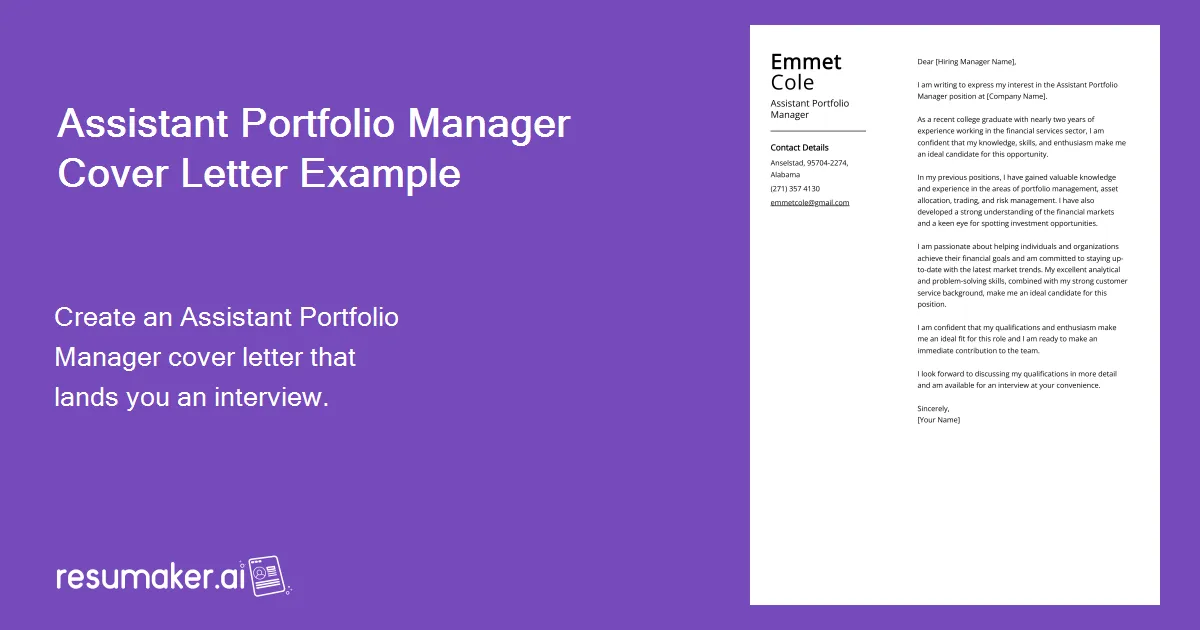
Showcase your portfolio management skills by describing your experience in investment strategy, asset allocation, and risk management. Provide specific examples of how you have successfully managed portfolios, including the investment strategies you have used, the types of assets you have managed, and the returns you have achieved. Discuss your understanding of market trends and your ability to analyze financial data. Highlight your ability to make informed investment decisions and to manage risk effectively. Showcase your communication skills by demonstrating your ability to explain complex financial concepts in a clear and concise manner.
Showcasing Investment Strategies
Detail the investment strategies you have used in your past roles. This could include value investing, growth investing, or any other specialized strategies you are proficient in. Explain your approach to asset allocation, diversification, and risk management, and how you tailor these strategies to meet the specific needs of different clients or portfolios. Provide examples of successful investment decisions you have made and explain the rationale behind them. Discuss any experience you have with specific financial instruments, such as stocks, bonds, derivatives, or alternative investments. Be sure to mention the experience with specific market conditions, like bull or bear markets, and demonstrate your ability to adapt your strategy accordingly.
Addressing Any Gaps in Your Resume
Use your cover letter to address any gaps or inconsistencies in your resume, such as career changes, periods of unemployment, or unusual job moves. Frame these gaps positively, explaining the reasons behind them and highlighting what you have learned during those times. If you’ve taken time off to pursue further education or training, explain how it has enhanced your skills and made you a better candidate. If you’ve changed careers, explain why you made the transition and how your previous experience is relevant to the portfolio manager role. Be honest and transparent, but always focus on the positive aspects of your experience and the value you bring to the table. Explain how these experiences have shaped your career aspirations.
Closing the Cover Letter
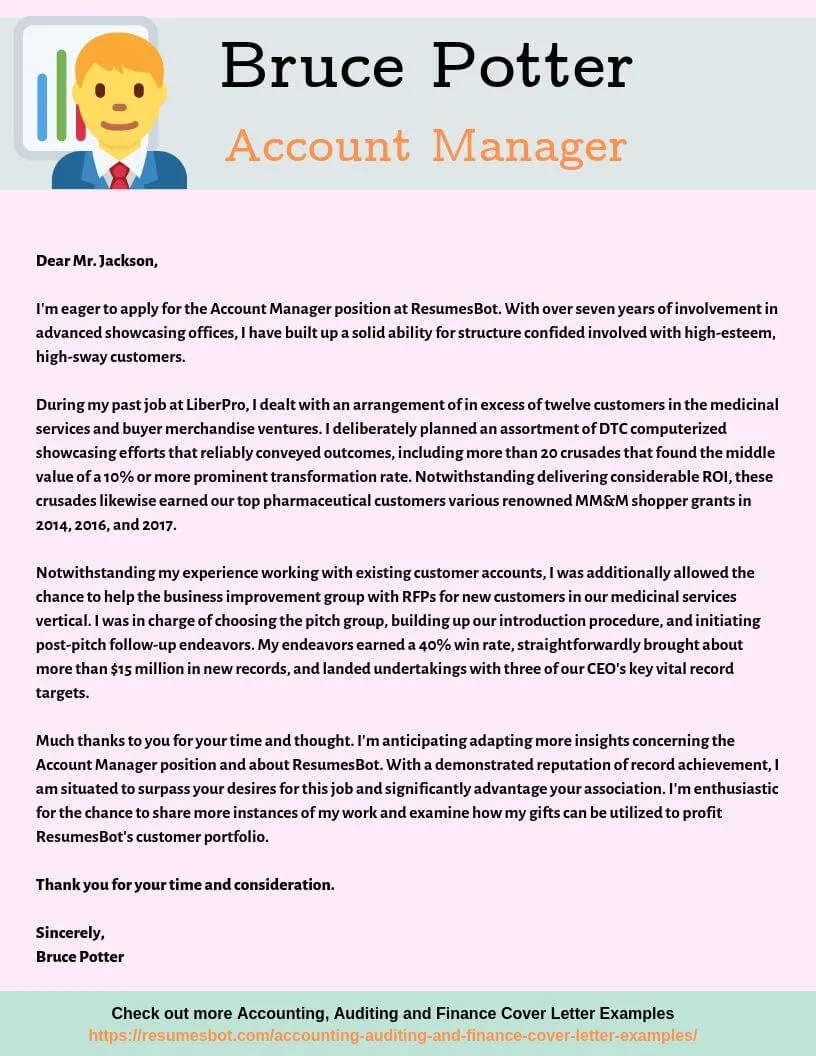
Your closing paragraph should reiterate your interest in the position and express your desire for an interview. Summarize your key qualifications and reiterate why you are the best fit for the role. Thank the hiring manager for their time and consideration. End the letter with a professional closing, such as ‘Sincerely’ or ‘Best regards,’ followed by your typed name. This section is your final chance to leave a positive impression, so make sure it is clear, concise, and professional.
Expressing Enthusiasm and Gratitude
End your cover letter by reiterating your enthusiasm for the position and expressing gratitude for the hiring manager’s time and consideration. Reiterate your interest in the specific role and your understanding of the company’s mission. Thank the hiring manager for considering your application and for the opportunity to learn more about the role. You can also express your eagerness to discuss your qualifications further in an interview. Avoid generic phrases and instead, tailor your closing to the specific opportunity and company. This shows you are genuinely interested in the role and appreciate the time and effort the hiring team invests in reviewing your application.
Call to Action
Include a call to action that encourages the hiring manager to contact you. This could be a statement such as ‘I am eager to discuss how my skills and experience can benefit your team’ or ‘I welcome the opportunity to discuss my qualifications in an interview.’ Make it easy for the hiring manager to take the next step by providing your contact information again, if you wish. Your call to action should be clear, concise, and professional, encouraging the reader to follow through with your request. This is the final step in your cover letter, and it will lead to an interview.
Proofreading and Formatting
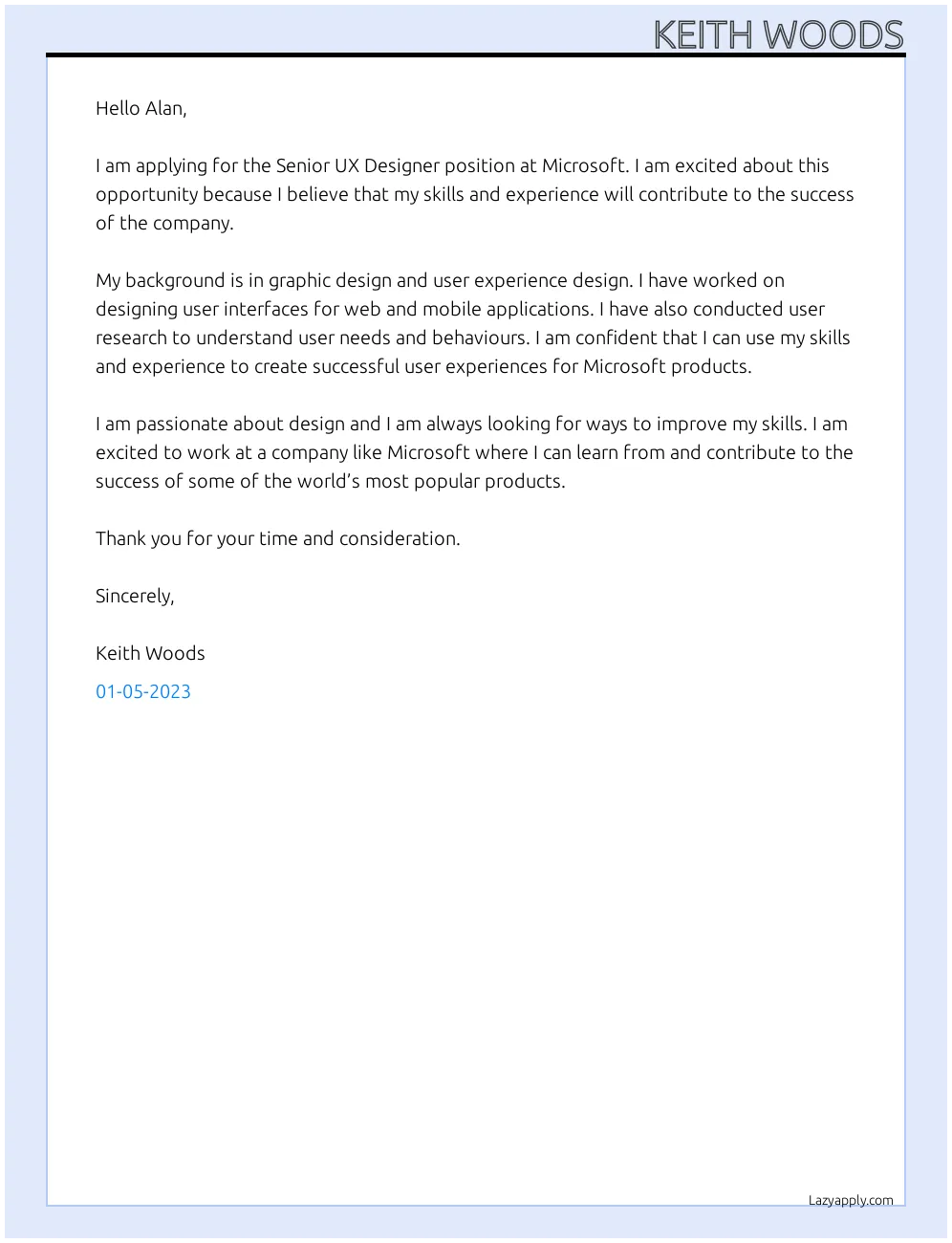
Before you submit your cover letter, carefully proofread it for any errors in grammar, spelling, and punctuation. Errors can detract from your professionalism and negatively impact your chances of landing an interview. Read the cover letter multiple times and consider having someone else review it as well. Ensure that the formatting is clear and consistent, with proper spacing, font, and margins. A well-formatted cover letter is easy to read and demonstrates your attention to detail. Paying attention to proofreading and formatting is one of the most effective ways to demonstrate your professionalism.
Ensuring Clarity and Conciseness
Write in clear, concise language that is easy to understand. Avoid jargon and overly complex sentences. Use active voice and strong verbs to make your writing more engaging. Keep your paragraphs short and to the point. Make sure your writing flows logically and that each paragraph builds upon the previous one. Ensure that your cover letter is focused and relevant to the job. Proofreading and editing are crucial to ensure the reader easily understands your writing and the key points you’re trying to convey. Removing unnecessary words and phrases makes your points more impactful.
Formatting Best Practices
Follow standard formatting practices to make your cover letter easy to read and visually appealing. Use a professional font such as Times New Roman, Arial, or Calibri, and set the font size to 11 or 12 points. Use 1-inch margins on all sides and single-space your text, with a double space between paragraphs. Align your text to the left, except for your contact information, which can be centered. Ensure that your cover letter is well-organized and visually appealing. Use headings and subheadings to break up your text and to make it easier for the hiring manager to scan the document. By following these formatting guidelines, you can make your cover letter stand out and increase your chances of getting an interview.
